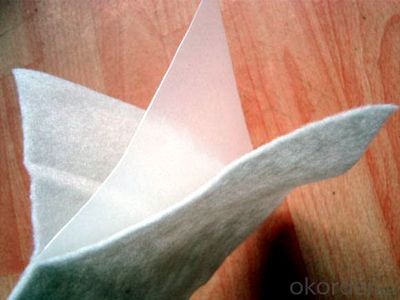- Understanding the Role of Geomembrane Liners in Waste Management
- Innovations in Geomembrane Liners for Water Management
- Geomembrane Liners: A Comprehensive Guide
- The Future of Geomembrane Liners in Civil Engineering
- Geomembrane Liners: Enhancing Landfill Stability
Manager:
WhatsApp:+86 177 0135 2670
Tel:+86 177 0135 2670
Email:marketing@okorder.com
Address:3rd Floor, No.2 Building, No.1 Sanlihe Road
The Testing and Certification of Geomembrane Liners
Geomembrane liners are a crucial component in many construction projects, particularly those involving water or waste containment. They are designed to provide a waterproof barrier that prevents leakage and contamination. But how do we know if a geosynthetic clay liner (GCL) or a high-density polyethylene (HDPE) liner is up to the task? That's where testing and certification come in.

The Importance of Testing
Testing is not just a formality; it's a necessity. It ensures that the geosynthetic material meets the required standards for durability, flexibility, and resistance to chemicals and UV radiation. Without proper testing, we risk using substandard materials that could fail prematurely, leading to costly repairs or environmental damage.
The Testing Process
The journey of a geosynthetic material from the factory to the construction site involves several stages of testing. Let's take a closer look at what happens behind the scenes.
Raw Material Testing
Before anything is even manufactured, the raw materials are tested. This is to ensure that they are free from defects and possess the necessary properties to be transformed into a high-quality geosynthetic material.
Manufacturing Quality Control
During the manufacturing process, quality control checks are performed continuously. This includes testing for thickness, strength, and the presence of any impurities.
Sample Testing
Once the geosynthetic material is produced, samples are taken and subjected to a series of tests. These tests can include:
- Tensile strength testing to ensure the material can withstand the stresses it will encounter.
- Puncture resistance testing to verify that the material is robust enough to resist punctures from stones or other sharp objects.
- Chemical resistance testing to confirm that the material will not degrade when in contact with specific chemicals.
- UV resistance testing to ensure the material can withstand exposure to sunlight without breaking down.
Field Testing
After the geosynthetic material has passed all the laboratory tests, field testing is conducted to see how it performs in real-world conditions. This can involve installing a small section of the liner and monitoring its performance over time.
Certification Bodies and Standards
To add an extra layer of assurance, geosynthetic materials are often certified by independent third-party organizations. These organizations have stringent standards that must be met before a material can be deemed certified.
What Does Certification Mean?
Certification means that the material has been thoroughly tested and meets the highest quality standards. It gives consumers confidence that the product they are using will perform as expected.
Some Common Standards
- ASTM Standards: Developed by the American Society for Testing and Materials, these standards cover a wide range of materials, including geosynthetics.
- GRI Standards: The Geosynthetic Institute provides guidelines for the proper installation, testing, and performance of geosynthetic materials.
- EN Standards: The European Committee for Standardization sets standards for materials used in construction projects within the European Union.
The Role of Certification in the Industry
Certification plays a vital role in the geosynthetic industry. It helps to:
- Ensure a level playing field for manufacturers by setting a benchmark for quality.
- Provide assurance to end-users that the materials they are using meet specific performance criteria.
- Facilitate international trade by creating a common understanding of what constitutes a high-quality geosynthetic material.
Personal Touch: The Human Element
While the process of testing and certification is largely technical, it's important to remember the human element. The people who design, manufacture, test, and certify these materials are dedicated professionals who take pride in their work. They understand the impact that their products have on the environment and the communities they serve.
The Future of Geomembrane Liners
As technology advances, so too does the testing and certification process. We can expect to see more sophisticated methods for evaluating the performance of geosynthetic materials, as well as new materials that offer improved performance and sustainability.
Conclusion
In conclusion, the testing and certification of geomembrane liners is a critical aspect of ensuring the success of construction projects involving water or waste containment. It's a process that combines rigorous scientific methods with a deep understanding of the practical needs of the industry. By choosing certified materials, we can have confidence in the quality and performance of our geosynthetic materials, knowing that they have been put through their paces and have come out on top.
- Previous:The Compatibility of Geomembrane Liners with Various Substrates
- Next:Geomembrane Liners: A Reliable Solution for Leachate Collection
-
2024-12-05Geomembrane Liners: A Comprehensive Guide






